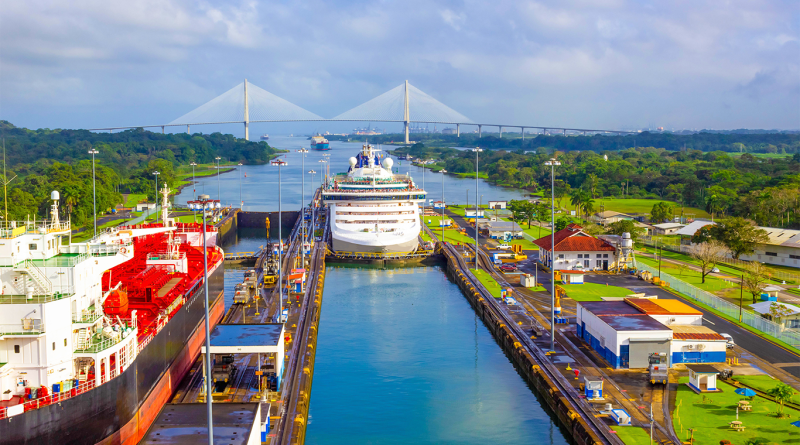New Panama Canal Cargo Transit Record
The MSC Marie, a neopanamax cargo vessel, recently made history by becoming the largest ship to cross the Panama Canal. This significant event, which took place on August 30, 2024, surpasses the previous record held by Ever Max in 2023. At a time when the canal faces operational challenges due to environmental conditions, this achievement underscores the resilience and efficiency of the Panama Canal Authority (ACP). It marks a milestone for global maritime trade, reaffirming the importance of this critical shipping route.
The Journey of MSC Marie
The MSC Marie embarked on its record-setting voyage from Asia, with its journey starting in ports across China and Korea before reaching Manzanillo in Mexico. Measuring 366 meters in length and with a carrying capacity of 17,640 twenty-foot equivalent units (TEU), the vessel symbolizes a new era in maritime transport. As the largest neopanamax cargo ship to navigate the canal, the MSC Marie’s transit highlights the critical role the Panama Canal plays in facilitating global trade.
The route, which links the Pacific and Atlantic oceans, remains one of the busiest and most vital shipping corridors worldwide. The canal is an essential path for goods moving between Asia and the Americas, significantly reducing travel time and cost. The successful passage of MSC Marie reinforces the strategic importance of the Panama Canal as a reliable conduit for trade, even amidst regional challenges.
MSC Marie is a marvel of modern engineering. With a deadweight tonnage (DWT) of 202,562, a length of 366 meters (1,200 feet), and a width of 51 meters (167.4 feet), it is designed to maximize cargo capacity while navigating the constraints of key global ports and waterways. The ship’s capacity of 17,640 TEU exceeds that of the Ever Max, which previously held the record with 17,312 TEU.
The comparison between MSC Marie and Ever Max underscores the rapid evolution in vessel size and capacity. The ability of the Panama Canal to accommodate such large ships illustrates its strategic adjustments and infrastructural enhancements made over the years, particularly with the expansion completed in 2016. This adaptability is crucial in a shipping landscape where economies of scale drive ever-larger vessels.
Impact on the Panama Canal and Global Shipping
The successful transit of MSC Marie has far-reaching implications for the Panama Canal and the global shipping industry. It demonstrates the canal’s ability to accommodate larger, more efficient vessels, despite recent operational constraints due to a prolonged regional drought. In response to these challenges, the ACP has implemented limits on vessel draught and daily transits to ensure the sustainability of the route.
The Panama Canal’s efforts to adapt and maintain its status as a key artery for international trade are evident in the passage of MSC Marie. This transit not only proves the canal’s operational resilience but also reinforces its importance in a time of shifting global trade patterns. The achievement is a testament to the canal workers’ dedication and the ACP’s commitment to maintaining the route’s reliability and efficiency.
Looking ahead, the Panama Canal is poised to face both challenges and opportunities. As global trade volumes continue to grow, the canal must balance its capacity with environmental sustainability and operational efficiency. The transit of larger ships like MSC Marie is likely to become more common, prompting further infrastructure developments and adjustments to accommodate the evolving needs of maritime transport.
At the same time, environmental factors such as climate change pose significant challenges. The recent drought, which led to limits on draught and daily transits, underscores the need for adaptive strategies to manage water resources effectively. The future success of the Panama Canal will depend on its ability to innovate and adapt to these dynamic conditions, ensuring its role as a vital link in global trade for years to come.
Sources:
